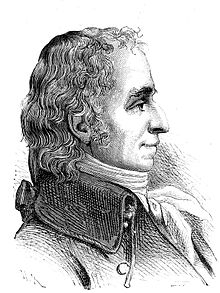
François-Noël Babeuf, also known as Gracchus Babeuf, was a French proto-communist, revolutionary, and journalist of the French Revolutionary period. His newspaper Le tribun du peuple was best known for its advocacy for the poor and calling for a popular revolt against the Directory, the government of France. He was a leading advocate for democracy and the abolition of private property. He angered the authorities who were clamping down hard on their radical enemies. In spite of the efforts of his Jacobin friends to save him, Babeuf was executed for his role in the Conspiracy of the Equals.
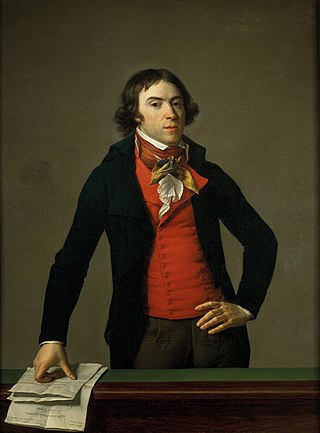
Bertrand Barère de Vieuzac was a French politician, freemason, journalist, and one of the most prominent members of the National Convention, representing the Plain during the French Revolution. The Plain was dominated by the radical Montagnards and Barère as one of their leaders supported the foundation of the Committee of Public Safety in April and of a sans-culottes army in September 1793. According to Francois Buzot, Barère was responsible for the Reign of Terror, like Robespierre and Louis de Saint-Just. In Spring 1794 and after the Festival of the Supreme Being, he became an opponent of Maximilien Robespierre and joined the coup, leading to his downfall.

The Society of the Friends of the Constitution, renamed the Society of the Jacobins, Friends of Freedom and Equality after 1792 and commonly known as the Jacobin Club or simply the Jacobins, was the most influential political club during the French Revolution of 1789. The period of its political ascendancy includes the Reign of Terror, during which well over 10,000 people were put on trial and executed in France, many for political crimes.

The Mountain was a political group during the French Revolution. Its members, called the Montagnards, sat on the highest benches in the National Convention.

Jacques-Nicolas Billaud-Varenne, also known as Jean Nicolas or by his nickname, the Righteous Patriot, was a French personality of the Revolutionary period. Jacques Nicolas Billaud-Varenne was an instrumental figure of the period known as the Reign of Terror. Billaud-Varenne climbed his way up the ladder of power during that period, becoming one of the most militant members of the Committee of Public Safety. He was recognized and worked with French Revolution figures Georges Danton and Maximilien Robespierre, and is often considered one of the key architects of The Terror. "No, we will not step backward, our zeal will only be smothered in the tomb; either the Revolution will triumph or we will all die."
In the historiography of the French Revolution, the Thermidorian Reaction is the common term for the period between the ousting of Maximilien Robespierre on 9 Thermidor II, or 27 July 1794, and the inauguration of the French Directory on 2 November 1795.

Jean-Baptiste Louvet de Couvray was a French novelist, playwright and journalist.

The September Massacres were a series of killings of prisoners in Paris that occurred in 1792, from Sunday, 2 September until Thursday, 6 September, during the French Revolution. Between 1,176 and 1,614 people were killed by fédérés, guardsmen, and sans-culottes, with the support of gendarmes responsible for guarding the tribunals and prisons, the Cordeliers, the Committee of Surveillance of the Commune, and the revolutionary sections of Paris.
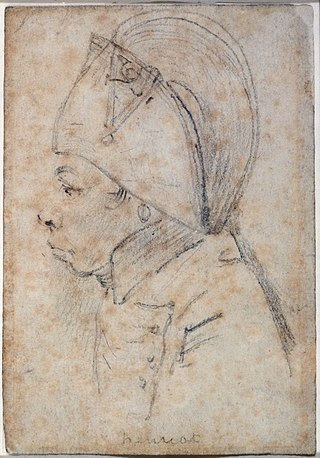
François Hanriot was a French Sans-culotte leader, street orator, and commander of the Garde Nationale during the French Revolution. He played a vital role in the Insurrection of 31 May – 2 June 1793 and subsequently the fall of the Girondins. On 27 July 1794 he tried to release Maximilien Robespierre, who was arrested by the Convention. He was executed on the next day – together with Robespierre, Saint-Just and Couthon – by the rules of the law of 22 Prairial, only verifying his identity at the trial.

The Committee of General Security was a parliamentary committee of the French National Convention which acted as police agency during the French Revolution. Along with the Committee of Public Safety it oversaw the Reign of Terror. The Committee of General Security supervised the local police committees in charge of investigating reports of treason, and was one of the agencies with authority to refer suspects to the Revolutionary Tribunal for trial and possible execution by guillotine.

Augustin Bon Joseph de Robespierre, known as Robespierre the Younger, was a French lawyer, politician and the younger brother of French Revolutionary leader Maximilien Robespierre. His political views were similar to his brother's. When his brother was arrested on 9 Thermidor, Robespierre volunteered to be arrested as well, and he was executed by the guillotine along with Maximilien and 20 of his supporters.
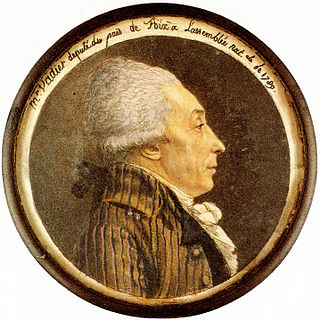
Marc-Guillaume Alexis Vadier was a major French politician of the French Revolution. He is sometimes called the "Great Inquisitor", for his active participation in the Reign of Terror. During this time, he was in charge of the Comité de Sûreté Générale, which was tasked with the prosecution of the so-called enemies of the Revolution. He is probably one of the main actors in the fall of Robespierre, which was his political rival.

Philippe-François-Joseph Le Bas was a French politician and revolutionary.

Maurice Duplay was a French carpentry contractor and revolutionary in the French Revolution. In September 1793 he became a member of the Revolutionary Tribunal. He was landlord to Maximilien de Robespierre, Charlotte Robespierre, Augustin Robespierre and Georges Couthon.

Maximilien François Marie Isidore de Robespierre was a French lawyer and statesman who became one of the best-known, influential, and controversial figures of the French Revolution. As a member of the Estates-General, the Constituent Assembly, and the Jacobin Club, he campaigned for universal manhood suffrage, the right to vote for people of color, Jews, actors, and domestic staff, and the abolition of both clerical celibacy and French involvement in the Atlantic slave trade. In 1791, Robespierre was elected as "public accuser" and became an outspoken advocate for male citizens without a political voice, for their unrestricted admission to the National Guard, to public offices, and to the commissioned ranks of the army, for the right to petition and the right to bear arms in self defence. Robespierre played an important part in the agitation which brought about the fall of the French monarchy on 10 August 1792 and the convocation of the National Convention. His goal was to create a one and indivisible France, establish equality before the law, abolish prerogatives, and defend the principles of direct democracy. He earned the nickname "the incorruptible" for his adherence to strict moral values.
François Louis Michel Chemin des Forgues was a French politician, and Foreign Minister.
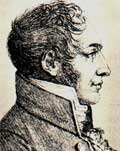
Jacques-Alexis Thuriot, known as Thuriot de la Rosière, and later as chevalier Thuriot de la Rosière, chevalier de l'Empire was an important French statesman of the French Revolution, and a minor figure under the French Empire of Napoleon Bonaparte.
Philippe-Antoine Dorfeuille was an 18th-century French actor, playwright, great traveller and revolutionary.
Edme-Bonaventure Courtois was a deputy of the National Convention. He found the will of Marie-Antoinette in the collection of papers of Robespierre hidden under his bed.
